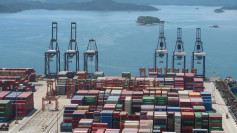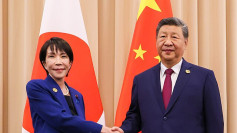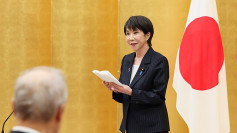China's recent military drills surrounding Taiwan have once again raised tensions in the region, with Taipei condemning the actions as an "unreasonable provocation." These exercises, which involved joint operations by China's army, navy, air force, and rocket force, were aimed at sending a "stern warning" to what Beijing describes as "separatist acts of Taiwan independence forces." The drills took place in the Taiwan Strait and in areas encircling the island, reflecting China's ongoing efforts to assert pressure on the self-governing democracy.
In a statement on Monday, the Eastern Theater Command of the Chinese military announced that the drills, code-named "Joint Sword-2024B," were a continuation of similar exercises conducted earlier this year. The drills involved Chinese warships, fighter jets, and amphibious assault vessels, as well as mobile missile launchers. These maneuvers are part of a broader strategy by Beijing to normalize military activity in the area and gradually increase its show of force.
Taiwan's response was swift. Its Ministry of Defense issued a statement condemning the drills, labeling them as a blatant provocation. "We strongly denounce these unreasonable actions by China, which undermine regional peace and stability," the statement read. Taiwan's President Lai Ching-te also addressed the nation, reassuring citizens that the government would defend the island's democracy and freedom. Lai, who has consistently championed Taiwan's sovereignty, declared on Taiwan's National Day that the island "is not subordinate" to China, a statement that further fueled Beijing's ire.
China, which views Taiwan as a breakaway province, has ramped up its military exercises around the island in recent years, often coinciding with events that provoke Beijing's anger. In August 2022, China launched a week of military drills following a visit by then-U.S. House Speaker Nancy Pelosi to Taiwan, a move that Beijing perceived as an affront to its territorial claims. Similarly, the latest drills followed President Lai's inauguration, during which he reiterated his stance on Taiwan's sovereignty, which Beijing deems a direct challenge to its authority.
The People's Liberation Army (PLA) described Monday's exercises as a multifaceted operation, involving combat-readiness patrols, blockades of key ports, and assaults on maritime and ground targets. Although the drills did not involve live fire or missile launches, as seen in previous exercises, they were notable for their scope. Taiwan's Ministry of Defense reported detecting 25 Chinese aircraft, 16 of which crossed the median line of the Taiwan Strait, an informal boundary that Beijing has increasingly disregarded. Additionally, seven Chinese warships were observed in the vicinity, underscoring the scale of China's military presence.
The drills also highlighted Beijing's use of "gray zone" tactics, actions that fall short of open conflict but are intended to intimidate and exert pressure. For instance, Taiwan's Coast Guard intercepted a Chinese individual near the Kinmen Islands on a raft during the exercises. While the motives behind the individual's actions remain unclear, Taiwan's defense officials did not rule out the possibility that it was part of China's broader gray zone strategy.
The United States, which maintains unofficial relations with Taiwan and is a key supporter of its defense, expressed concern over the drills. State Department spokesperson Matthew Miller said in a statement, "We are seriously concerned by these military provocations, which risk escalating tensions in the region." The U.S. urged China to exercise restraint and avoid further actions that could destabilize the Taiwan Strait.
China's long-standing claim over Taiwan has been a source of ongoing tension in the region. Despite having never controlled Taiwan, China's Communist Party has vowed to "reunify" the island with the mainland, by force if necessary. Taiwan, however, maintains its sovereignty, and many of its citizens see themselves as distinctly Taiwanese, with no desire to be governed by the People's Republic of China. Under President Xi Jinping, China has adopted a more assertive stance, ramping up both rhetoric and military actions in its efforts to bring Taiwan under its control.
While Monday's drills were less intense than previous rounds, experts note that China is steadily increasing the scale and frequency of its military activities near Taiwan. Wen-Ti Sung, a Taipei-based fellow at the Atlantic Council's Global China Hub, said, "Beijing is trying to get everyone used to this kind of show of force, inch by inch." The goal, he added, is to set new precedents with each exercise while avoiding a coordinated international response.






